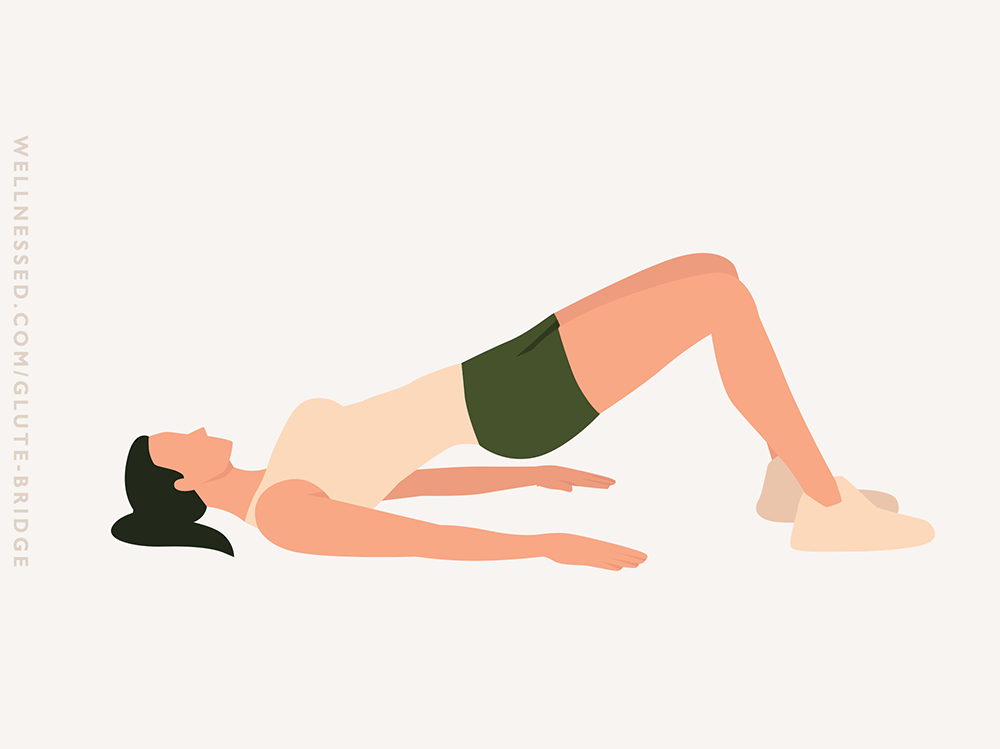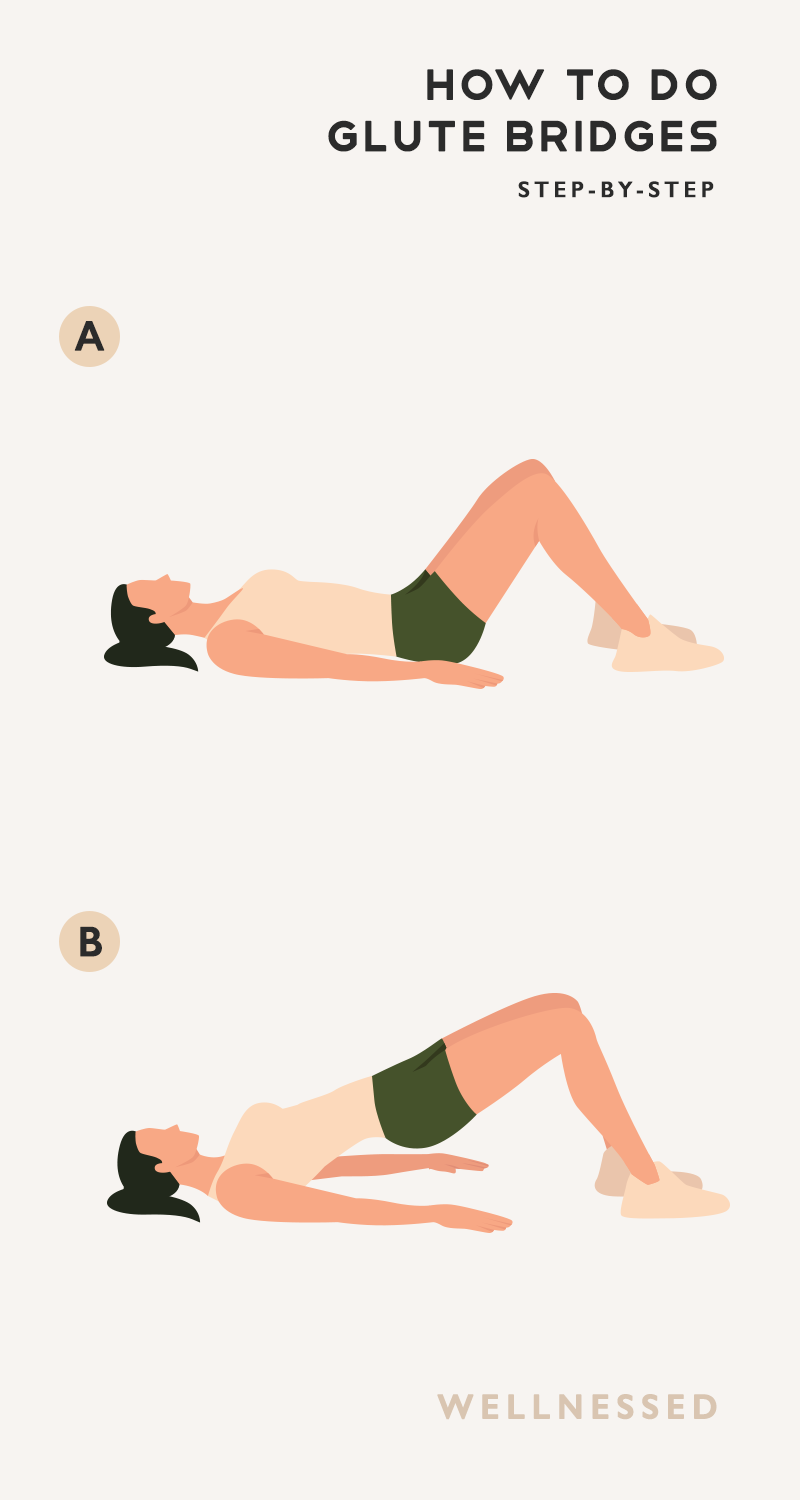- Main muscles worked: Glutes (butt)
- Other muscles: Core, hamstrings (back of the thigh)
- Exercise type: Isolation exercise
- Equipment: None
The glute bridge exercise strengthens the glutes, improves glute activation, and increases core stability. It helps to improve form and function when performing other exercises such as deadlifts and squats, or doing everyday movements such as walking or running.
The glute bridge is sometimes also known as a hip raise or butt lift.
Glute Bridge Progression
You can make this exercise more challenging in several ways:
- Weighted. Add weight such as a dumbbell or barbell across the hips. This progression focuses on increasing strength.
- Resistance band. Instead of weights, you can use a resistance band across your hips.
- One leg. A single-leg glute bridge increases the weight you need to lift (one leg has to lift the whole body, doubling the load) and the glute muscles have to work harder to maintain stability in this position. This progression focuses on building stability and activating the glutes.
- Elevated. Place your feet on an elevated surface such as an exercise ball or bench. This increases the time under tension and makes the glutes work harder.



